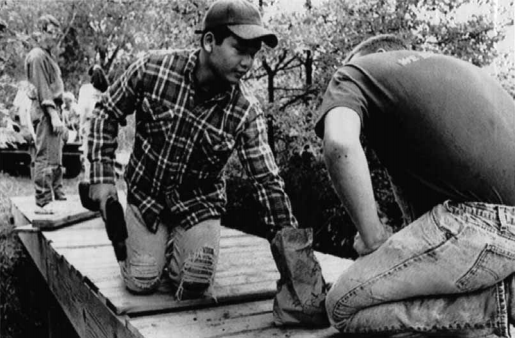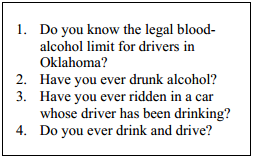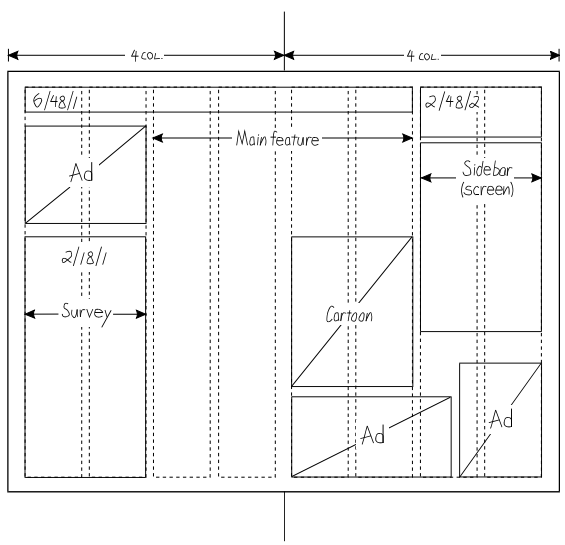Study Guide
Field 037: Journalism
Sample Selected-Response Questions
General Test Directions
This test consists of two sections: 1) a section with selected-response questions and 2) a constructed-response section.
Each question in the first section is a selected-response question with four answer choices. Read each question and answer choice carefully and choose the ONE best answer.
Try to answer all questions. Even if you are unsure of an answer, it is better to guess than not to answer a question at all. You will NOT be penalized for guessing.
The second section of this test consists of one constructed-response assignment. You will be asked to provide a written response to the assignment. Directions for completing your written response to the constructed-response assignment appear immediately before the assignment.
You may NOT use any type of calculator or reference materials during the test session.
Sample Selected-Response Questions
NOTE: You can scroll to view items in sequence, or use the links at the left to go to the item/information aligned
to a specific competency.
Competency 0001
Understand the history of journalism and mass media.
1. As television became more popular and influential during the 1960s and 1970s, many daily newspapers responded by:
- expanding their international coverage.
- using more photographs.
- reducing their in-depth reporting.
- devoting less space to breaking news.
- I and II only
- I and III only
- II and IV only
- III and IV only
Correct Response: C.
As television became more pervasive during the 1960s and 1970s, newspapers met the public's new expectation for visual images by increasing the number of photographs they included in their publications. In addition, since television could provide news to its audience immediately, newspapers had to respond by offering something broadcast media did not. Newspapers shifted their focus from reporting breaking news to providing in-depth coverage of events, a type of coverage that the time constraints of broadcast media do not allow.
Competency 0004
Understand principles of newsworthiness and criteria for evaluating news stories.
2. A journalism teacher shows his class a recent edition of the city's daily newspaper and asks students to examine the coverage of two recent crimes. The first story, which appears on the front page, describes a mugging in which a suburban teenager was robbed. The second, which appears as an inside story, describes the accidental gang-related shooting of an inner-city woman, who remains in critical condition in the hospital. Students should be helped to recognize that the most serious problem with this coverage is that it:
- represents unbalanced news judgment by featuring the story of a robbery more prominently than a serious shooting injury.
- represents a distorted portrait of life in a metropolitan area by featuring a suburban mugging attack so prominently.
- is unfair to both individuals since such coverage exploits the suffering of crime victims without their consent.
- reflects a social bias that values the robbing of a suburban resident above the wounding of an inner-city resident.
Correct Response: D.
When newspaper editors make decisions about the placement of stories, they are communicating a message about what they feel is important and what they think their audience will find most interesting. The placement of the stories in this example indicates that the editors and/or the audience place a higher value on the mugging of the suburban teen than on the shooting of the inner-city woman.
Use the photograph below to answer the two questions that follow [#s 3 and 4].
As an exercise in her photojournalism class, a high school journalism teacher invites students to consider the print reproduced below. She explains that the photograph was taken to illustrate a story in the school newspaper about a junior class project to help restore hiking trails in a local state park.

Competency 0009
Understand the effective use of visual elements in a publication.
3. The photograph would have been significantly better for photojournalistic purposes if the:
- student's co-worker were identifiable.
- background were in focus.
- contents of the paper bag were visible.
- format were vertical.
Correct Response: A.
In photojournalism, it is best to avoid including shots of the backs of people who are major figures in the story being told by the photograph as such shots do not generate the same amount of audience interest as shots that include people's faces. If the identity of the student's co-worker were shown, it would provide more information about the scene and better communicate the group effort and cooperation that is the intended message of this photograph.
Competency 0006
Understand journalistic writing processes and how to use these processes to prepare effective journalistic products.
4. Groups of students develop captions for the photograph. Which of the following captions reflects the best journalistic practice?
- TROUBLED WATERS. This bridge in Deer Ridge State Park will be in great shape when Pete Chapman gets through with it.
- ON THE MEND. Pete Chapman helps a state park worker repair a bridge in Deer Ridge State Park.
- MAKING IT LOOK EASY. Junior Pete Chapman shows the way in Deer Ridge State Park.
- HELPING HAND. Using a screw gun, Pete Chapman helps a trail monitor repair a bridge in Deer Ridge State Park.
Correct Response: B.
The best caption is one that expresses the central idea of the photograph and fills in the information gaps left by the picture, such as the identities of the people, their location, and what they are doing. A good caption is informational and does not provide an opinion, give extraneous information, or repeat information that one can glean from the photograph. In this case, therefore, the caption in response B is the best choice.
Competency 0012
Understand how to plan and manage the budget for student publications.
5. A yearbook adviser is preparing a bid sheet for use by printers. Before preparing the bid sheet, the adviser should:
- develop a demographic profile of likely yearbook buyers.
- identify the order in which yearbook sections will appear.
- determine the type of paper to be used for the yearbook.
- estimate the total advertising space in the yearbook.
Correct Response: C.
The bid sheet for a printer should include as many specifics as possible about the technical aspects of the printing job, such as the number and size of pages, whether the job will be in black and white or color, and what type of paper will be used. Unlike content issues, these factors will influence the printer's expenses and therefore will influence the bid the printer will be able to make.
Use the information below to answer the four questions that follow [#s 6, 7, 8, and 9].
Following a serious alcohol-related automobile accident involving several Sexton High School seniors, the staff of the school newspaper, the Sexton Star, is planning a major feature on underage drinking. Ms. Johnson is a journalism teacher at Sexton High and faculty adviser to the Star.
Competency 0015
Understand the management and governance of student publications.
6. Because Ms. Johnson realizes that the planned feature may be controversial, she should make a point of meeting with the Star's editors to:
- advise them that the Supreme Court Hazelwood decision gives school administrators the right to cancel any story they find unacceptable.
- suggest that they schedule an appointment with the school principal to inform him of their plans for the feature.
- remind them of their First Amendment rights to publish responsible journalism without censorship.
- suggest that they obtain legal advice about openly discussing an activity that is illegal in the state of Oklahoma.
Correct Response: B.
It would be wisest for the students to speak with the principal before undertaking this story to discuss their approach to the story and any parameters that the principal would like the students to follow in researching and reporting the story. This will help assure the principal that the story will be covered accurately, fairly, and with sensitivity, and is also likely to help avoid the principal's censoring the story later in the process.
Competency 0005
Understand journalistic procedures for preparing to write.
7. A staff member develops the following survey for members of the senior class.

Which of these questions should be dropped from the survey because of its limited relevance to the issue being addressed?
- question 1
- question 2
- question 3
- question 4
Correct Response: A.
This survey is intended to determine how many seniors at the high school have been directly or indirectly involved in drinking alcohol and/or driving under the influence of alcohol. Students' knowledge of the legal blood-alcohol limit for drivers in Oklahoma is less relevant to this issue than the other questions in this survey.
Competency 0003
Understand rights and responsibilities of journalistic media and the application of legal and ethical standards in journalism.
8. As Star journalists begin interviewing students and parents for the story, the paper receives an angry call from the father of a ninth grader. The parent says that he is speaking for a group of parents who want the story canceled because it may encourage underage drinking. He adds that if the Star's editors refuse, the group will take its case to the district superintendent. When Ms. Johnson hears that the editors plan to go ahead with the story, her best suggestion would be that they:
- run a sidebar story about this attempt at parental interference in the scholastic press.
- avoid contact with members of this group of parents as reporters pursue the story.
- schedule their own meeting with the district superintendent to state their case.
- offer to incorporate the views of the parent group into their overall coverage.
Correct Response: D.
When reporting on a controversial issue, it is important to include as many viewpoints as possible in the reporting to provide the most balanced and responsible coverage of the issue. Presenting these parents' views as part of the story may serve to balance any potentially positive views about underage drinking that some students may express in the story.
Competency 0010
Understand principles of publication design and how to use these principles to develop effective and aesthetically pleasing journalistic products.
9. Before pasting up their final layout, the Star's editors show Ms. Johnson the following dummy for the double truck.

Which of the following suggestions would best apply accepted principles of newspaper design to the prospective layout?
- Avoid "tombstoning" by reducing the point size of the sidebar headline on the right-hand page.
- Create more white space by positioning the cartoon more centrally.
- Strive for a more horizontal effect by resetting the sidebar across six columns.
- Create better emphasis by reversing the positions of the ad and the survey on the left-hand page.
- I and II only
- I and IV only
- II and III only
- II and IV only
Correct Response: B.
In this example, the point size of the sidebar headline should be changed because having the same size and style of type across the entire top of the page ("tombstoning") will make it difficult for readers to determine where one headline ends and the other begins. In addition, the survey and the advertisement above it should be switched to give the survey more emphasis and to create a balanced look by placing all the advertisements in the lower corners of the two pages.
Competency 0014
Understand how to work with student personnel on student publications.
10. A copy editor for a school newspaper is most likely to focus on which of the following tasks?
- checking spelling, grammar, and word usage
- cropping and scaling photographs
- supervising the page design of publications
- determining the newsworthiness of stories
Correct Response: A.
The job of the copy editor is to check all text and captions in the newspaper for proper word usage and grammar.
